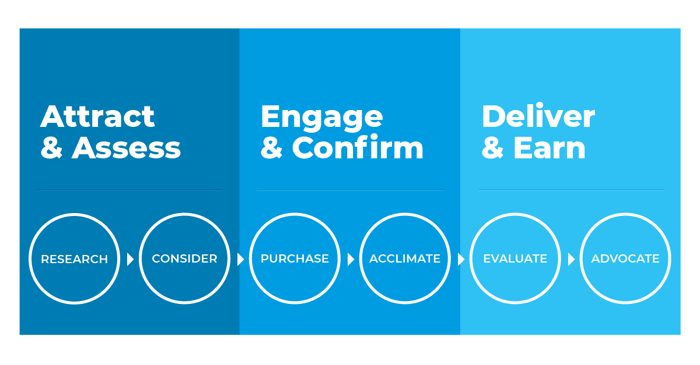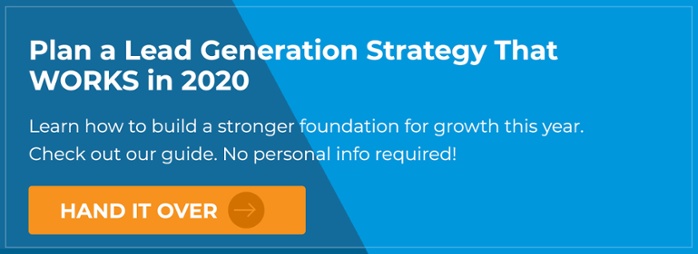
Types of Digital Marketing For Healthcare Companies: Pros and Cons
Patrick Dodge
Founder
If you spend time on LinkedIn or business blogs you’ve probably noticed digital marketing comes in many different shapes and colors these days.
As healthcare companies like yours set their sights on new growth goals, they may want to consider new investments to fill their sales pipelines and close new business. But with so much crossover between different types of digital marketing, it’s easy to get confused over the distinctions between them.
We’re going to go over the most popular ones and break down the pros and cons of each so you can find a direction that feels best for your brand.
Inbound Marketing
Inbound marketing as about attracting people to your website and converting them into interested buyers using helpful content.
Popularized by the founders of HubSpot more than ten years ago, this approach is one of the most significant shifts ever in the history of marketing. It’s based on the understanding that buyers no longer depend on salespeople to explain options to them. They do their own research on the internet.
Unlike “push marketing” like advertising, brands attract buyers to their websites by publishing content that answers customer questions. The biggest advantage of this approach is people want objective, transparent information. By educating your buyers (with the occasional sales offer in the mix), you can demonstrate expertise and earn the trust of your customer base.
The greatest challenge with using inbound marketing is the competition for search engine traffic. Organic traffic is one of the highest converting channels and marketers know it, resulting in a “gold rush” state of frenzied content creation among brands. In HubSpot’s 2018 State of Inbound report, almost 80% of North American companies and 75% of global organizations named inbound as their “primary approach to marketing.”
With so many companies trying to establish thought leadership, the internet has become increasingly saturated with content in almost every industry. Success today depends on a well-informed strategy that focuses on niche-markets, insights into buyer decisions, and personalized content.
Account-Based Marketing
As personalization has increased in importance, account-based marketing, or ABM, has emerged as a highly effective extension of inbound.
Instead of using content to attract a world of buyers out there, ABM uses hyper-targeted campaigns to reach specific accounts and the people within then. When executed correctly, an account-based strategy can produce amazing dividends for healthcare companies, but it comes with some extra legwork.
First and foremost, sales and marketing teams need to work together as they identify target accounts and craft messaging just for them. Think of ABM as an inbound marketing strategy that seeks to gain the trust of people at one business rather than every buyer out there looking for a solution.
The obvious advantage with ABM is that it uses personalization in a way that accelerates closed business with key buyers. It also can get Sales and Marketing working together with a shared sense of purpose.
The downside is the expense and effort required for making hyper-targeted content for a single account. While some content can be cloned and reused, you will spend more time connecting with fewer buyers than you would using a purely inbound strategy.
Customer Experience Marketing

When companies talk about growth, they are usually referring to an increase in new customers. But what about their existing customers?
According to author and business strategist Frederick Reicheld, a five percent boost in customer retention results in a 25 to 100 percent leap in profits. That’s a significant difference that begs the question: What are you doing to strengthen your brand’s relationship with existing clients?
Customer experience marketing recognizes that most companies offer solutions that differ little from those of their competitors, at least from the perspective of buyers. The only true differentiator today is the experience you deliver to clients.
This type of marketing extends beyond the superficial goals of increasing customer spend and retention. It reaches deep into how the entire organization manages clients, looking for ways to remove friction at every point in the customer journey and replace it with a pleasant, memorable experience.
The online pet food retailer Chewy.com is a great example of a brand that lives and breathes customer experience marketing. When one of their users contacted customer service to cancel an order because his dog passed away, the Chewy team not only refunded his money and asked him to donate the food to a local animal shelter, they did something that will bring you to tears.
The Chewy team found a photograph of the recently deceased pooch (the customer had uploaded it to his account profile) and hired an artist to paint a personalized oil portrait of it. They sent it to the customer with a greeting card, expressing their condolences.
What’s beautiful about this story is Chewy had absolutely nothing to gain from this gesture. Their customer was mourning a heavy loss, and they responded with a gift that was all heart. Even if the man would no longer be buying from them in the short term, you can bet Chewy made a customer for life out of him.
I am writing about it right now because the story went viral on Facebook. This is the power of customer experience marketing.
Advertising
Many healthcare companies gravitate toward advertising when they get serious about marketing, and often regret it later on.
Advertising is attractive because many of us remember a day when it was easy and effective. You could place an ad on the radio, TV, or a newspaper and reach a significant chunk of your market.
We all know this is not the case today, and digital ads don’t fare much better for one simple reason -- people hate them.
Ad blocking apps, “banner blindness,” and simple avoidance are keeping people from seeing and hearing branded messages. So, what place does advertising have in the marketing mix today?
As competition has intensified on various content-related platforms, advertising is a great tool for boosting reach with targeted buyers you are trying to connect with.
Facebook and LinkedIn are just a few platforms where ad dollars are increasingly necessary for optimizing branded content. Google Ads is perhaps the most important channel for advertising as it allows you reach people who are actively searching for a product or service you provide. Remarketing ads can also increase the return on your Google ads by targeting people who abandoned your landing page without converting on their first visit.
To summarize my thoughts on advertising – it works, but use caution when trying it out. Run tests and monitor your results closely. It’s easy to blow a bunch of money on a campaign and end up with nothing to show for it except a report that measures “impressions and clicks,” not sales.
Which of the approaches above will prove most effective when it comes to growing your business? That’s never an easy question to answer. Many healthcare companies are using a blended approach – inbound with a focus on ABM, or ABM amplified with advertising. Any combination of the above could work, as long as it meets potential buyers at the right junction in their journey and delivers real value.
The key is anticipating their needs. There is a time for educating and helping them, and a time to shift to a sales conversation. Learn how to navigate that, and your brand find lots of success.
Aug 23, 2019 8:08:20 AM

